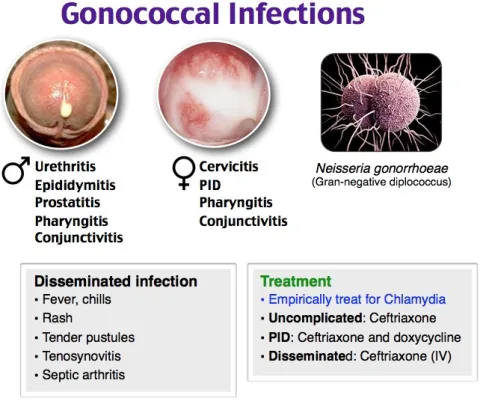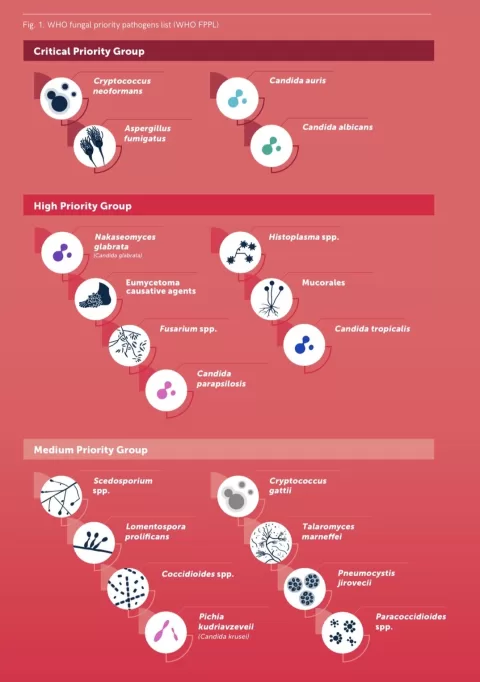Multidrug-resistant Salmonella poses a significant threat to public health, particularly through its prevalence in the poultry industry. Recent genomic analyses indicate that Salmonella enterica isolates harboring cephalosporinase genes, like bla CTX-M-65, are increasingly found in food products, alarming researchers and consumers alike. These MDR Salmonella strains, resistant to multiple classes of antibiotics, complicate treatment options for foodborne illnesses that can arise from contaminated poultry. As antimicrobial resistance in poultry becomes more pronounced, the potential for these strains to cause severe infections is heightened. Addressing this challenge requires vigilant monitoring and effective strategies to mitigate the spread of these robust pathogens in our food systems.
The emergence of antibiotic-resistant strains of bacteria, particularly in food sources such as poultry, has raised alarms about food safety and consumer health. Terms like antimicrobial resistant Salmonella and extended-spectrum beta-lactamase (ESBL) producing strains highlight the growing complexity of this issue. The detection of cephalosporin-resistance genes, notably bla CTX-M-65, in various Salmonella serovars signals an urgent need for comprehensive strategies to combat these pathogens. As the landscape of foodborne pathogens evolves, understanding the nuances of these multidrug-resistant organisms becomes imperative for prevention and control. Continuous efforts in research, surveillance, and public education are vital to shielding communities from the risks posed by resistant bacteria.
The Rise of Multidrug-Resistant Salmonella in Poultry
Multidrug-resistant Salmonella strains are becoming an increasing concern in the poultry industry, primarily due to their association with severe foodborne illnesses. A recent genomic analysis of Salmonella enterica isolates has highlighted how these strains are spreading through the food supply chain. This spread poses a significant risk to public health as MDR strains can cause infections that are difficult to treat due to their resistance to multiple antibiotic classes. The presence of the bla CTX-M-65 gene, which has been linked to these resistant strains, complicates the scenario and emphasizes the need for vigilant monitoring.
The emergence of MDR Salmonella strains in poultry is significant, particularly concerning extended-spectrum beta-lactamase (ESBL) genes like bla CTX-M-65 found within various serovars, including S Infantis and S Typhimurium. These findings from the National Antimicrobial Resistance Monitoring System (NARMS) surveys reflect a growing trend where resistance is not isolated to a specific serovar. Such trends necessitate rigorous surveillance and intervention strategies to mitigate risks associated with antimicrobial resistance in poultry production.
Understanding Antimicrobial Resistance in Poultry
Antimicrobial resistance in poultry, particularly the rise of MDR Salmonella, is driven by several factors, including the overuse and misuse of antibiotics in animal agriculture. This situation fosters an environment where bacteria such as Salmonella enterica can adapt and develop resistance. The presence of resistance determinants, specifically those coding for aminoglycosides and tetracyclines among others, raises alarms within the healthcare community as they are correlated to increased morbidity and mortality from foodborne illnesses.
Furthermore, the genetic mobility of resistance genes, such as bla CTX-M-65, enables their transfer between different bacterial strains and species, complicating eradication efforts. As poultry remains a significant vector for the transmission of Salmonella to humans, understanding the dynamics of antimicrobial resistance is crucial. It informs clinical practices and strategies aimed at reducing the burden of foodborne diseases linked to resistant Salmonella.
The Public Health Implications of MDR Salmonella
The public health implications of multidrug-resistant Salmonella strains are profound. As outlined in the research conducted by North Carolina State University, these resistant strains have the potential to cause severe infections that are not only difficult to treat but also lead to increased healthcare costs and strained health systems. With the alarming rate of resistance seen in foodborne pathogens, there is an urgent need for integrated public health approaches that encompass education, surveillance, and stewardship initiatives aimed at curbing the spread of resistance.
Furthermore, the increasing prevalence of MDR strains makes it critical for consumers to be educated on safe food handling practices. This includes proper cooking and hygiene protocols, as these measures can significantly reduce the risk of exposure to resistant Salmonella strains. Public health officials advocate for comprehensive food safety campaigns that can effectively address the risks posed by antimicrobial resistance in food products, especially poultry.
The Role of Surveillance in Managing MDR Salmonella
Surveillance plays a pivotal role in managing the spread of multidrug-resistant Salmonella in the poultry industry. The study’s findings underline how routine monitoring through systems like NARMS is essential for identifying and tracking antimicrobial resistance trends. By continuously gathering data on Salmonella enterica isolates, researchers can map the distribution of resistance genes such as bla CTX-M-65 and assess their implications for food safety and public health.
Enhanced surveillance systems enable timely interventions and the implementation of policies designed to mitigate the risk of MDR Salmonella in food products. This proactive approach not only helps in understanding the epidemiology of resistant strains but also aids in formulating evidence-based practices for antibiotic use in agriculture. Ultimately, these actions can lead to a reduction in foodborne illnesses linked to antibiotic-resistant pathogens.
Antimicrobial Stewardship in Poultry Farming
Antimicrobial stewardship is critical in combating the rise of multidrug-resistant Salmonella within the poultry sector. Responsible use of antibiotics can significantly reduce the pressure that selects for resistance, safeguarding both animal and public health. Implementing stewardship programs that promote the prudent use of antibiotics, alongside alternative management strategies, can enhance the quality and safety of poultry products.
Moreover, educating poultry producers about the consequences of antibiotic overuse is essential. Encouraging farmers to adopt practices that minimize the need for antimicrobials, such as improved husbandry and biosecurity measures, can lead to healthier flocks and a reduced incidence of foodborne pathogens. Effective antimicrobial stewardship, combined with genomic monitoring efforts, stands as a robust strategy to address the challenges posed by MDR Salmonella.
Genomic Analysis of Salmonella Enterica Isolates
The genomic analysis of Salmonella enterica isolates collected from poultry demonstrates the complexity of antimicrobial resistance. By employing whole-genome sequencing (WGS), researchers can uncover the genetic makeup of MDR strains and identify critical resistance genes like bla CTX-M-65. This detailed insight reveals not just the resistance patterns but also how these genes are distributed across various serovars, thereby highlighting the potential for outbreaks and the need for comprehensive control measures.
WGS provides a powerful tool for tracking resistance mechanisms and understanding how they evolve within bacterial populations. This knowledge is essential for shaping policies that curb the transmission of resistant strains in food animals and effectively managing the public health implications of foodborne illnesses associated with antibiotic-resistant Salmonella. Researchers advocate for ongoing genomic surveillance as a cornerstone of antimicrobial resistance management strategies.
Implementation of Consumer Education Programs
Consumer education programs are a fundamental component in the fight against multidrug-resistant Salmonella, particularly as the public increasingly relies on poultry products for nutrition. Educating consumers about the risks of foodborne illness and the importance of safe food practices is crucial in preventing infections linked to resistant strains. Proper cooking, food storage, and hygiene practices reduce the likelihood of Salmonella transmission to humans.
Additionally, these education initiatives can empower consumers to make informed choices about food products, including a better understanding of how antibiotic use in animal farming can impact food safety. By fostering awareness around the presence of MDR Salmonella and the need for safe food handling techniques, public health authorities can enhance food safety and reduce the burden of foodborne illnesses.
Future Directions in Research and Policy for Salmonella Control
Future research directions must focus on understanding the evolution of multidrug-resistant Salmonella strains and developing innovative strategies to combat antimicrobial resistance in food production. This includes exploring alternative methods of pathogen control, such as vaccination, probiotics, and improvement of animal husbandry practices, which can minimize the need for antibiotics in poultry.
Policy efforts also need to prioritize establishing stringent regulations surrounding antibiotic use in agriculture. There is a critical need for collaborative efforts between health authorities, agricultural stakeholders, and researchers to enhance surveillance, inform regulatory frameworks, and implement effective interventions. Such initiatives are essential for mitigating the spread of MDR Salmonella and safeguarding public health through improved food safety.
The Economic Impact of Foodborne Illnesses Caused by MDR Strains
The economic impact of foodborne illnesses caused by multidrug-resistant Salmonella strains is profound, affecting healthcare systems, food producers, and consumers alike. The treatment of infections from these resistant strains not only incurs significant medical costs but also leads to lost productivity and potential long-term health issues for those infected. As healthcare providers grapple with the challenges posed by tough-to-treat infections, the economic burden continues to rise.
Furthermore, poultry producers may face increased operational costs associated with implementing enhanced biosecurity and surveillance measures. The necessity for stringent controls to manage antibiotic use and resistance can disrupt traditional practices, leading to modifications in farming strategies. Addressing these economic factors through effective prevention and control measures is essential to bolster the resilience of the poultry industry while ensuring public health safety.
Frequently Asked Questions
What is multidrug-resistant Salmonella and why is it a concern?
Multidrug-resistant Salmonella refers to strains of Salmonella enterica that have developed resistance to multiple antibiotics, making infections harder to treat. This resistance poses a significant public health risk, as these bacteria contribute to foodborne illness outbreaks and complicate treatment options for affected individuals.
How does the bla CTX-M-65 gene relate to multidrug-resistant Salmonella?
The bla CTX-M-65 gene is an extended-spectrum beta-lactamase (ESBL) gene commonly found in multidrug-resistant Salmonella strains. Its presence allows these bacteria to resist a wider range of antibiotics, increasing their threat to public health, particularly in food production and clinical settings.
What role does antimicrobial resistance in poultry play in the spread of multidrug-resistant Salmonella?
Antimicrobial resistance in poultry significantly contributes to the spread of multidrug-resistant Salmonella. The use of antibiotics in poultry farming can select for resistant strains, leading to the emergence of MDR Salmonella that can contaminate the food supply and cause foodborne illness in consumers.
What are the main challenges posed by Salmonella enterica in food safety?
Salmonella enterica presents significant food safety challenges due to its prevalence in contaminated food products and its ability to develop multidrug resistance. These factors lead to increased cases of foodborne illness, requiring effective monitoring and control strategies in the food supply chain.
How can consumers minimize the risk of foodborne illness caused by multidrug-resistant Salmonella?
To minimize the risk of foodborne illness from multidrug-resistant Salmonella, consumers should practice safe food handling, including thorough cooking of poultry, proper hygiene, and avoiding cross-contamination. Education on these practices is vital for reducing infection rates associated with MDR Salmonella.
What surveillance methods are used to study multidrug-resistant Salmonella strains?
Surveillance methods for studying multidrug-resistant Salmonella strains include antimicrobial susceptibility testing and whole-genome sequencing (WGS). These techniques help identify resistant serovars, monitor the spread of resistance genes like bla CTX-M-65, and assess the overall public health impact.
Why is genomic monitoring important in combating multidrug-resistant Salmonella?
Genomic monitoring is crucial for combating multidrug-resistant Salmonella as it helps identify genetic markers of resistance, track the spread of these strains across different environments, and guide effective interventions and antimicrobial stewardship practices to safeguard public health.
| Key Points |
|---|
| A genomic analysis indicates a rise in multidrug-resistant Salmonella strains in poultry. |
| The study used data from the National Antimicrobial Resistance Monitoring System (NARMS) from 2020 to 2024. |
| 132 Salmonella enterica isolates from retail poultry were analyzed for antibiotic resistance. |
| 14 isolates were identified as multidrug-resistant, containing the bla CTX-M-65 gene. |
| Most multidrug-resistant isolates belonged to S Infantis, S I -:r:1,5, and S Senftenberg serovars. |
| Research underscores the role of surveillance and antimicrobial stewardship in managing resistance. |
| Consumer education on proper food handling is essential to prevent Salmonella infections. |
Summary
Multidrug-resistant Salmonella is an increasing public health concern, particularly in poultry products. Recent studies have highlighted the alarming rise of multidrug-resistant strains like those harboring the bla CTX-M-65 gene, presenting significant challenges for treatment. To combat this issue effectively, there is a necessary emphasis on ongoing surveillance, responsible antibiotic use, and educating consumers on safe food practices, all aimed at reducing the risk of Salmonella infections and protecting public health.
The content provided on this blog (e.g., symptom descriptions, health tips, or general advice) is for informational purposes only and is not a substitute for professional medical advice, diagnosis, or treatment. Always seek the guidance of your physician or other qualified healthcare provider with any questions you may have regarding a medical condition. Never disregard professional medical advice or delay seeking it because of something you have read on this website. If you believe you may have a medical emergency, call your doctor or emergency services immediately. Reliance on any information provided by this blog is solely at your own risk.








